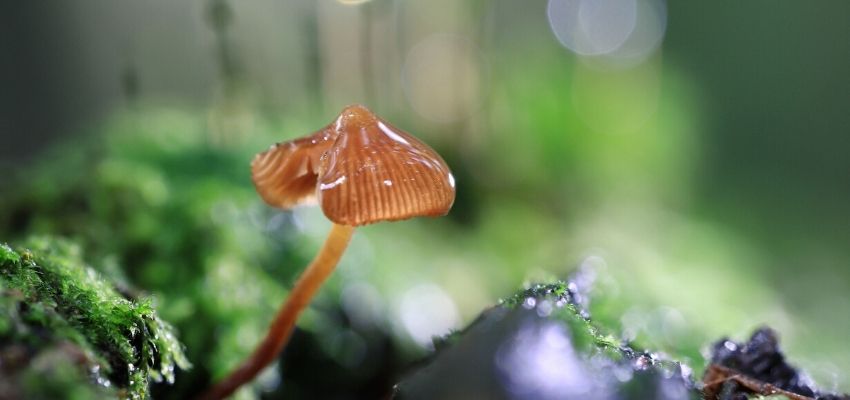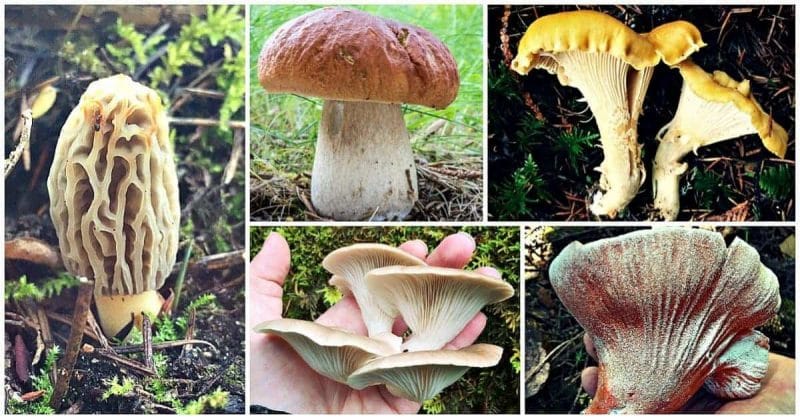Mushroom Foraging 101

Shoulder seasons are a forager’s dream. Fall packs the biggest punch for the “fungus amoungus” but Spring is not to be ignored! Mushrooms are popping up all around so it’s a great time to finally check “mushroom foraging” off of of your bucket list and this article is going to help you get started.
WHAT YOU NEED
- Basket or mesh bag
- Sharp knife
- Permit (depending on quantity)
- iNaturalist App & mushroom identification field guide (affiliate link)
Mushrooms need to be able to breath otherwise they will get slimy and rot rather quickly, especially on a warm day. Also, as you forage, the mushrooms you've gathered in your bag/basket can drop spores thus organically sowing for another day!
The knife is important because you want to trim the mushroom away from it's stalk in order to not harm the plant so it can regenerate in future season.
Check to see if there are any permit requirements in your state. Most states only require a permit for commercial foraging, were you are looking to gather gallons of various species of mushrooms. Here is what the US Forest Service has to say about mushroom permits. The skinny of it is, "No permit is required for incidental gathering of mushrooms for personal use. For a single species, the daily limit for personal use is one (1) gallon. For multiple species, the daily limit is three (3) species, (1) gallon each. Harvested chanterelle mushrooms must have a cap diameter of one inch or greater. You may not sell or trade mushrooms gathered with a personal use permit."

WHERE TO GO
This depends on what type of mushroom you’re hunting and what time of year. As it heats up in Spring mushrooms will start to grow at lower elevations and will crawl upward until the end of snowmelt and mushroom season. iNaturalist.org, which will be mentioned in further details below, is a great place to start. You can enter your city and filter for mushrooms then see the most recent reported locations along with which species of mushroom was found. If you just want to hunt morels, you can further filter the species of mushrooms by clicking on the mushroom icon in the filter then adding a keyword, "morel" in the filter option.
ETIQUETTE
Mushrooms will regrow as long as the forager cuts the mushroom, leaving a stump, instead of pulling them out of the ground. This is part of the reason mushroom hunters keeps their best foraging spots a secret, because the mushrooms will reappear next year.
IDENTIFICATION & SAFETY
Searching through Google Images to identify anything has proved unreliable. Instead, use the iNaturalist website to learn about mushrooms in your area using the websites search filters. You can also post pictures of the mushrooms you’ve found and other users will help you identify them. You can also see where people have been finding mushrooms in the “recent observations” area. iNaturalist is also available on a mobile app (iPhone & Android) that has a built-in plant identifier. While the identifier is better than Google images, don't trust your life on it. Mushroom foraging does come at a risk, one that all of us at Adventure Guru wants to make sure you don't take lightly.
Connect with your local mushroom foraging communities. Many of them offer regular classes and guided mushroom hunting experiences which offers a fantastic and safe way to dive into the world of mycology (study of mushrooms). Plus you will finally be able to check off, "Mushroom Foraging" from your bucket list! Safe hunting!